The objects that are depicted here, all originate from the earliest church-buildings in Tretten, and most of them still exist in todays church. The exception are the chandeliers and the crucifixes which are kept in The Museum of Cultural History in Oslo.
We know little about the original church-buildings, because there are few written sources. However, historical reports on the Christening of the population in Gudbrandsdalen, indicate that there has been a church here as early as in 1050.
From about 1300 to 1586/88, there was a church built of stone here, and between 1588 and 1727, there was a three-naved wooden church on this ground.
In 1728, a new church was built at the bottom of the hillside.
The medieval chandeliers (1100-1300) and (1200-1300)
The Chanderliers are dated on the backgound of how they are formed.
The oldest has conventional dragons’ heads and tiny ribbons, while the youngest one is decorated with leaves of clover and birch.
In 1880 the church-building in Tretten went through a considerable restoration.
On that occasion the chanderliers were sold to The Nordic Museum in Stockholm, whose founder was Artur Hazelius.
Torjus Leifson Jordet was the museum’s contact in Norway. He sold the chandeliers and several old objects belonging to the church, to The Nordic Museum.
The chandeliers were brought back to Norway in 1971, and can be regarded in The Museum of Cultural History in Oslo. The oldest chandelier is exibited, while the youngest one is stored.
The medieval crucifixes.
1. The oldest crucifix (1280-1300) has a peg beneath the vertical arm of the cross. It might indicate that the crucifix has been attached to a rafter. The question is whether it has been attached to the arch or used as an altarpiece?
The decoration shows a trunk of a wine-tree and its ramifications to the cross’ arms. The cluster of grapes above Jesus Christ’s head is the symbol of the Lord’s Supper: Christ’s blood, the salvation.
The question is, if this crucifix played an important role when building the new stone church?
2. The youngest crucifix (1300-1350), was from 1920 often referred to when describing the medieval art.
It is probably made in the town of Hamar, because of the quality or nature of the wood that is used.
All the surfaces of the wood that was going to be gilded or painted, were covered with linen and primed with chalk and glue.This kind of shaping is similar to crucifixes known from the southern part of Germany.
The crucifix has been a subject to deep devotion and worship. People felt a need to touch the crucifix in order to obtain forgiveness and salvation. That is why the left loin-cloth and the left thigh show sign of heavy wear. Illness and suffering were God’s punishment for man’s sin. Penance and forgivness were important for the salvation, and The Christ’s Passion and death were an admonition to the congregation.
Here, by the «Tjodveg» (the oldest public road between Oslo and Trondheim), the crucifix probably played an important part of the pilgrimage.
The ceiling in the sacristy.
Some of the materials from the wooden chuch of 1586-88 has been reused when building todays church in Tretten (1728), including the ceiling in the sacristy. The church-team at the Inspectorate of Ancient Monuments and Historic Buildings dates the decorations of the ceiling to 1600, but will not define the decorations as renaissance or baroque, which means before or after 1650. The lack of structural joints indicates however that this a baroque decoration.
Because of the painted angels’ heads, ( God’s messengers), there are reasons to believe that this ceiling was a part of the choir. The ceiling was repaired in 1685. Could the decorations originate from this period?
The church paintings.
The paintings hanging on the walls in the church-room were popular art in the 17th century. The artist didn’t sign his paintings. His motto was: God is sovereign, – I am anonymous.
Nevertheless, reasearchers think that Eggert Munch (1685?-1784) is the artist who made four of the paintings in the church of Tretten. Based on the date, three of these paintings must have belonged to the last church situated here on this ground, Kjørkjehaugen.
Eggert Munch was born in Vågå. He was the son of the vicar Henning Munch, and is related to the famous artist Edward Munch.
The offertory box.
The box is placed beside the altar in todays church. It is still in use while collecting money. The monogamous CVMSK, stands for Christian Wolfgang Monrath and Susanne Kraft. Monrath was the vicar in Øyer when both the nowadays churches in the parish were built. The married couple is buried beneath the floor in the church of Øyer.
The baptismal font’s dish
is a present from Sara Franzdatter Hummer (1615-1703). She was the daughter of the vicar Riiber in Øyer and was married to his succeeder, Anders Cold. After becoming a widow, Sara lived in the vicar’s home with her son, Nils. During the last years of her life she stayed with another son, Hans, at Stav in Tretten.
The chalice and the dish.
The chalice originates from the Middle Ages, before the reformation (1536).
In the catholic Church the vicar was the only one to drink wine. The vicar Fredrik Monrath, complained about the size of the chalice (wine-cup). «It containes wine hardly for half a kneeling». That’s why the chalice was enlargened and silvered in 1684. The dish was also silvered at the same time.
